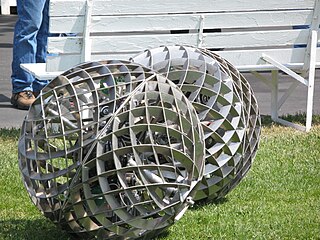 W
WOpen-source robotics (OSR) is where the physical artifacts of the subject are offered by the open design movement. This branch of robotics makes use of open-source hardware and free and open-source software providing blueprints, schematics, and source code. The term usually means that information about the hardware is easily discerned so that others can make it from standard commodity components and tools—coupling it closely to the maker movement and open science.
 W
WThe e-puck is a small (7 cm) differential wheeled mobile robot. It was originally designed for micro-engineering education by Michael Bonani and Francesco Mondada at the ASL laboratory of Prof. Roland Siegwart at EPFL. The e-puck is open hardware and its onboard software is open-source, and is built and sold by several companies.
 W
WiCub is a 1 metre tall open source robotics humanoid robot tested for research into human cognition and artificial intelligence.
 W
WIOIO is a series of open source PIC microcontroller-based boards that allow Android mobile applications to interact with external electronics. The device was invented by Ytai Ben-Tsvi in 2011, and was first manufactured by SparkFun Electronics. The name "IOIO" is inspired by the function of the device, which enables applications to receive external input ("I") and produce external output ("O").
 W
WOrb Swarm is a kinetic art work consisting of six semi-autonomous spherical robots. It was created in 2007 by a group of engineers and artists including Michael Prados, Jon Foote, Lee Sonko, and many others. Orb Swarm was inspired by previous work in robotics and kinetic art, and seeks to emulate swarm behavior in nature and human dancing. Nearly all of the hardware and software in the project is open source, and others are encouraged to build upon the project's efforts.
 W
WRobot Operating System is an open-source robotics middleware suite. Although ROS is not an operating system but a collection of software frameworks for robot software development, it provides services designed for a heterogeneous computer cluster such as hardware abstraction, low-level device control, implementation of commonly used functionality, message-passing between processes, and package management. Running sets of ROS-based processes are represented in a graph architecture where processing takes place in nodes that may receive, post and multiplex sensor data, control, state, planning, actuator, and other messages. Despite the importance of reactivity and low latency in robot control, ROS itself is not a real-time OS (RTOS). It is possible, however, to integrate ROS with real-time code. The lack of support for real-time systems has been addressed in the creation of ROS 2, a major revision of the ROS API which will take advantage of modern libraries and technologies for core ROS functionality and add support for real-time code and embedded hardware.
 W
WSalvius is the first open source humanoid robot to be built in the United States. Introduced in 2008, Salvius, whose name is derived from the word 'salvaged', has been constructed with an emphasis on using recycled components and materials to reduce the costs of designing and construction. The robot is designed to be able to perform a wide range of tasks by having a body structure that is similar to that of a human. The primary goal for Salvius is to create a robot that can function dynamically in a domestic environment.
 W
WTux Droid is a Linux wireless Tux mascot with a programmable interface, allowing it to announce events by its gestures and by ALSA driven sound. The events are detected by specific gadgets, which are handled by the Tux Gadget Manager. The Tux Droid supports Linux kernel 2.4 or later and needs an 800 MHz CPU and 128 MB RAM. Communication from Tux Droid to the computer is via signalling operating in the 802.11 WLAN band, but not compatible with Wi-Fi. The receiver resembles a plastic fish, and connects to the host computer's USB port. An infrared remote control is supplied; signals from this are received by Tux Droid and sent to the host software over the wireless link. For media detection it needs an internet connection. The mascot is driven by Atmel AVR RISC microcontrollers. The new version supports also Windows-based PCs. The Tux Droid can be used with Windows XP and Windows Vista.